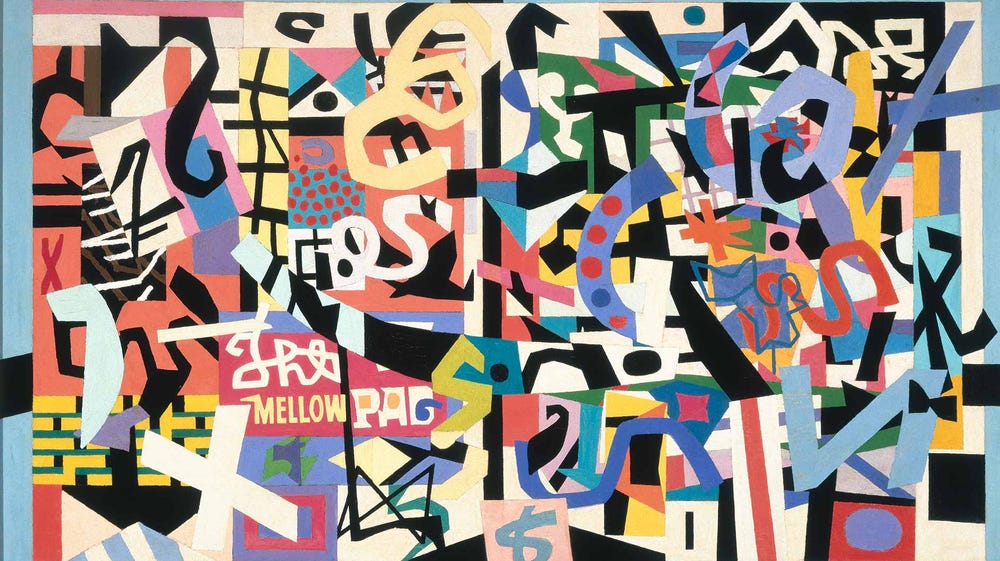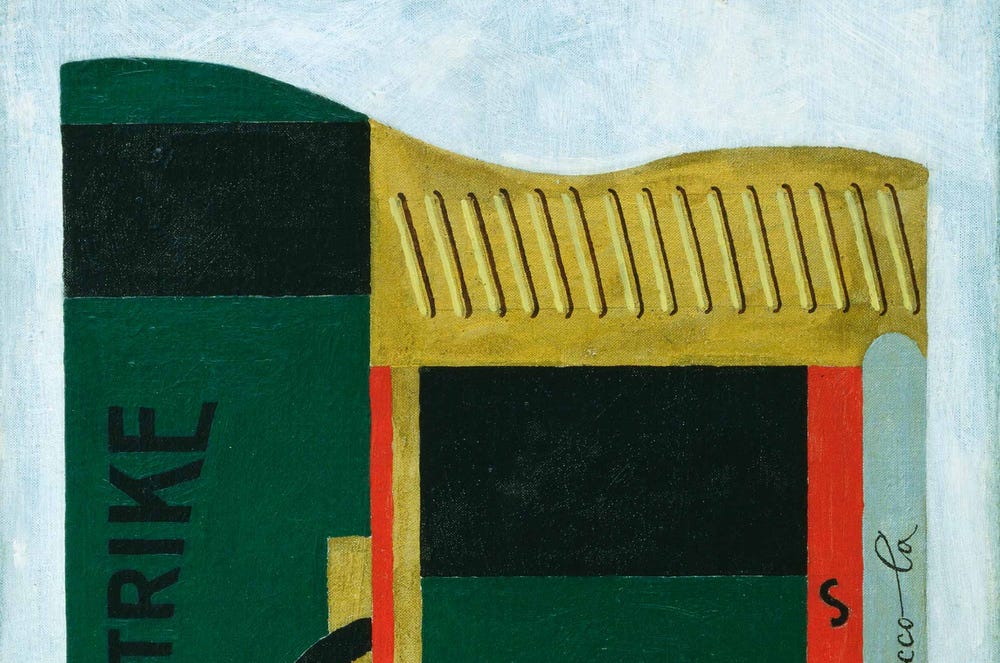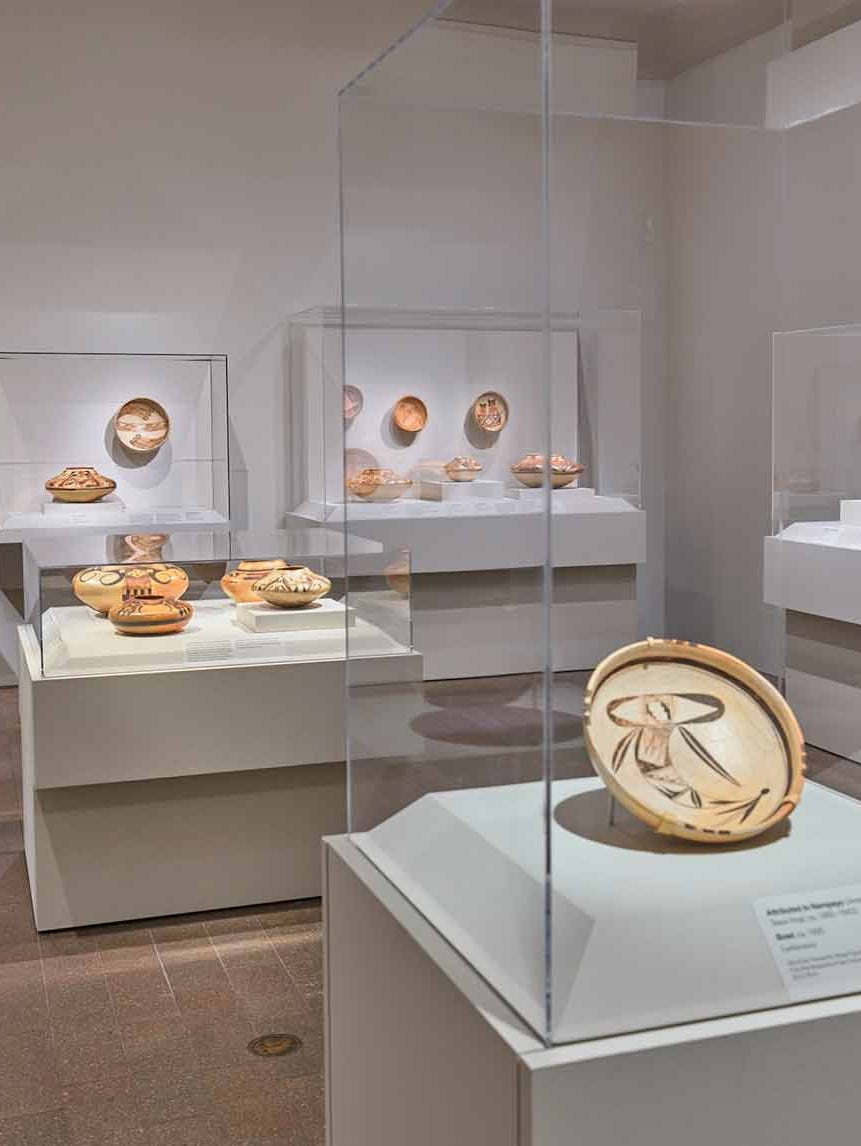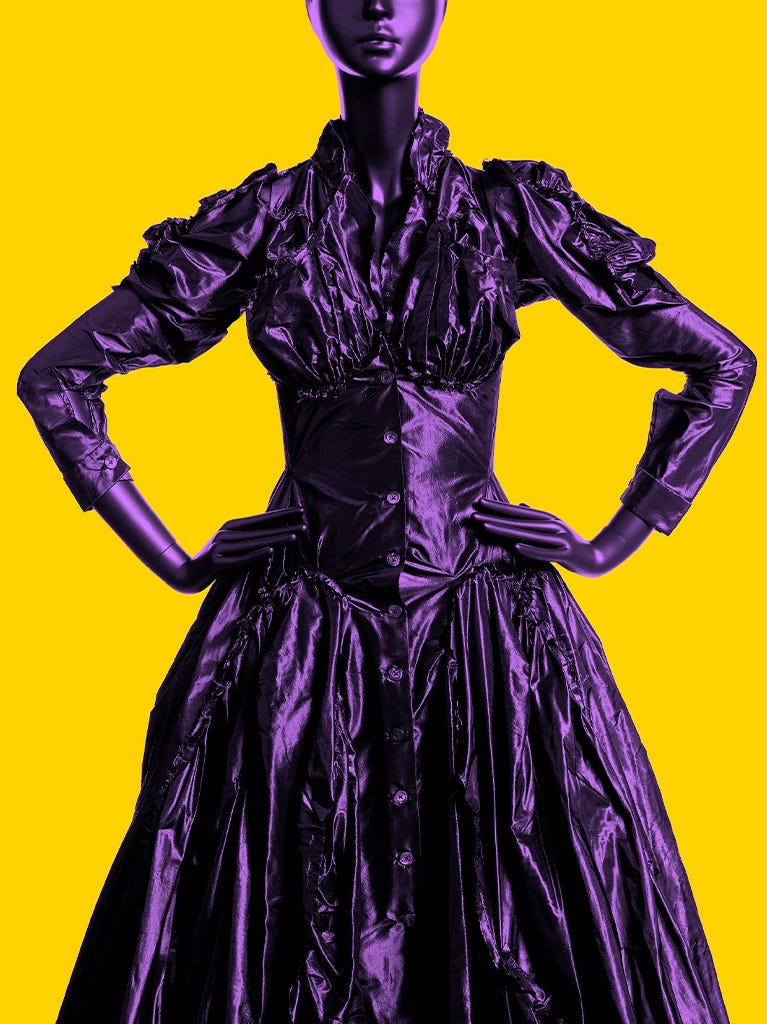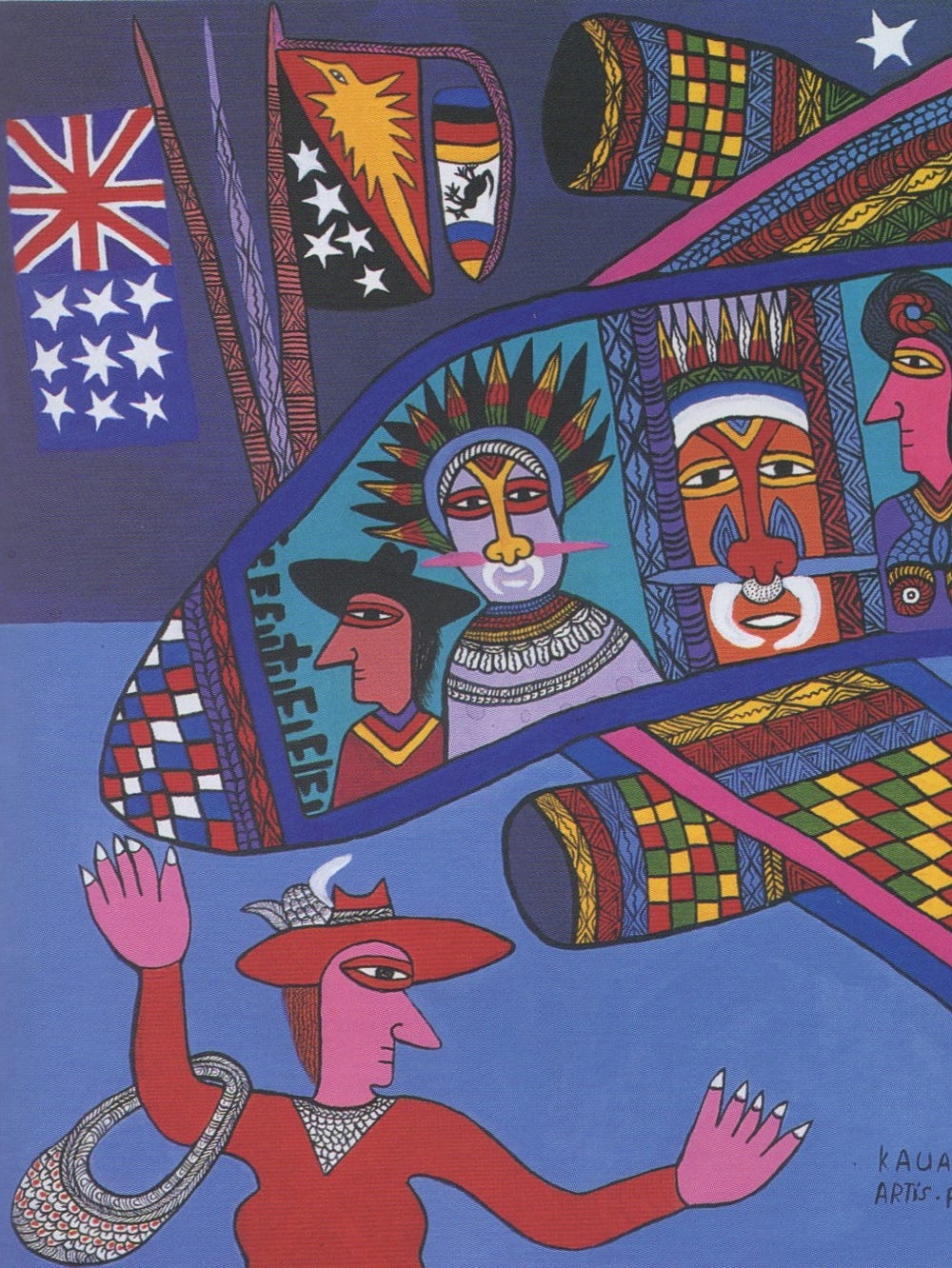Stuart Davis, The Mellow Pad, 1945 – 1951. Oil on canvas, 26 1/4 x 42 1/8 in. (66.7 x 107 cm). Brooklyn Museum, Bequest of Edith and Milton Lowenthal, 1992.11.6
Stuart Davis: In Full Swing
Jump to
Stuart Davis: In Full Swing is the first major exhibition in 20 years dedicated to this key figure in American Modernism. Featuring approximately 75 works — spanning from the artist’s breakthrough series in the 1920s focusing on tobacco packages and household objects to the painting left on his easel at his death, in 1964 — the exhibition highlights Davis’s unique ability to assimilate the visual languages of European Modernism, the imagery of popular culture, the aesthetics of advertising, and the rhythms of jazz into colorful, complex works. Blurring distinctions between “high” and “low” art, between abstraction and figuration, and between text and imagery, these paintings reflect both the excitement and turbulence of the artist’s times.
Davis was a lifelong jazz enthusiast, and his working method of appropriating and reworking his own earlier compositions shares with that musical genre the concept of variations on a theme, and similarly conveys a distinctly modern sense of dynamism and vibrancy. This is the first major exhibition to install works from different periods of the artist’s career alongside one another to explore their persistent thematic and visual interconnections. Davis’s innovative works paved the way for major developments in American postwar art such as Pop, and they remain resonant, relevant, and influential today.
In depth
Davis began his career at an early age, leaving high school after his freshman year to study art full time with Ashcan School leader Robert Henri in New York City. Five of his watercolors were included in the now-legendary Armory Show of 1913, which introduced Davis to the avant-garde European modernist styles that heavily influenced his subsequent work. His exposure to European Modernism continued during a yearlong sojourn in Paris, where he painted scenes of cafes and street life.
The de Young’s presentation begins in 1921, as Davis emerged from his apprenticeship with European modernist artists and movements and began to develop his mature style. Early works such as Lucky Strike draw their imagery from familiar commercial products and merge the bold, graphic style of advertising with the visual language of Cubism to communicate a distinctly modern — and an unmistakably American — experience. Davis similarly incorporated a Cubism-derived structure of flat, overlapping planes in the works he produced toward the end of the 1920s — including his well-known Egg Beater series of abstract still lifes (1927 – 28), three of which will be on display, and the vibrant landscapes he made in Paris, New York, and Gloucester, Massachusetts, where, beginning in 1915, he often spent summers.
During the Depression years of the 1930s, Davis was a committed social activist, dedicating much of his time to organizing on behalf of artists’ rights. By the late 1930s, he had increased the scale of his work and embraced an even more abstract language, influenced in part by his work as a muralist; one of the highlights of this section of the exhibition is his New York Mural (1932), which he produced for an exhibition at New York’s Museum of Modern Art. Davis’s abstractions of the 1940s, such as For Internal Use Only (1944 – 45) and The Mellow Pad (1945 – 51), feature densely patterned surfaces that anticipate the all-over compositional formats of Abstract Expressionists like Jackson Pollock.
In the works he produced between the end of World War II and his death, Davis abandoned the shallow pictorial space of Cubism in favor of even flatter compositions that reflect the aesthetic of the billboard, as seen in Visa (1951), whose reductive abstraction looks forward to 1960s Color-field painting.
A lifelong jazz enthusiast, Davis stated that jazz was the “great American art expression,” with “the same quality of art that [he] found in the best modern painting.” Davis’s working method of appropriating and reworking his own earlier compositions shares with that musical genre the concept of variations on a theme, and similarly conveys a uniquely modern sense of dynamism and vibrancy.
In the news
The Present is already obsolete but the Past is not Because what we call the Past is what we deeply regard as eternal. Stuart Davis, 1957
Gallery
Sponsors
This exhibition was organized by the National Gallery of Art, Washington, DC, and the Whitney Museum of American Art, New York. President’s Circle: The Bernard Osher Foundation and Diane B. Wilsey. This project is supported in part by an award from the National Endowment for the Arts. Major support is provided by the Henry Luce Foundation and the Terra Foundation for American Art. This exhibition is supported by an indemnity from the Federal Council on the Arts and the Humanities
